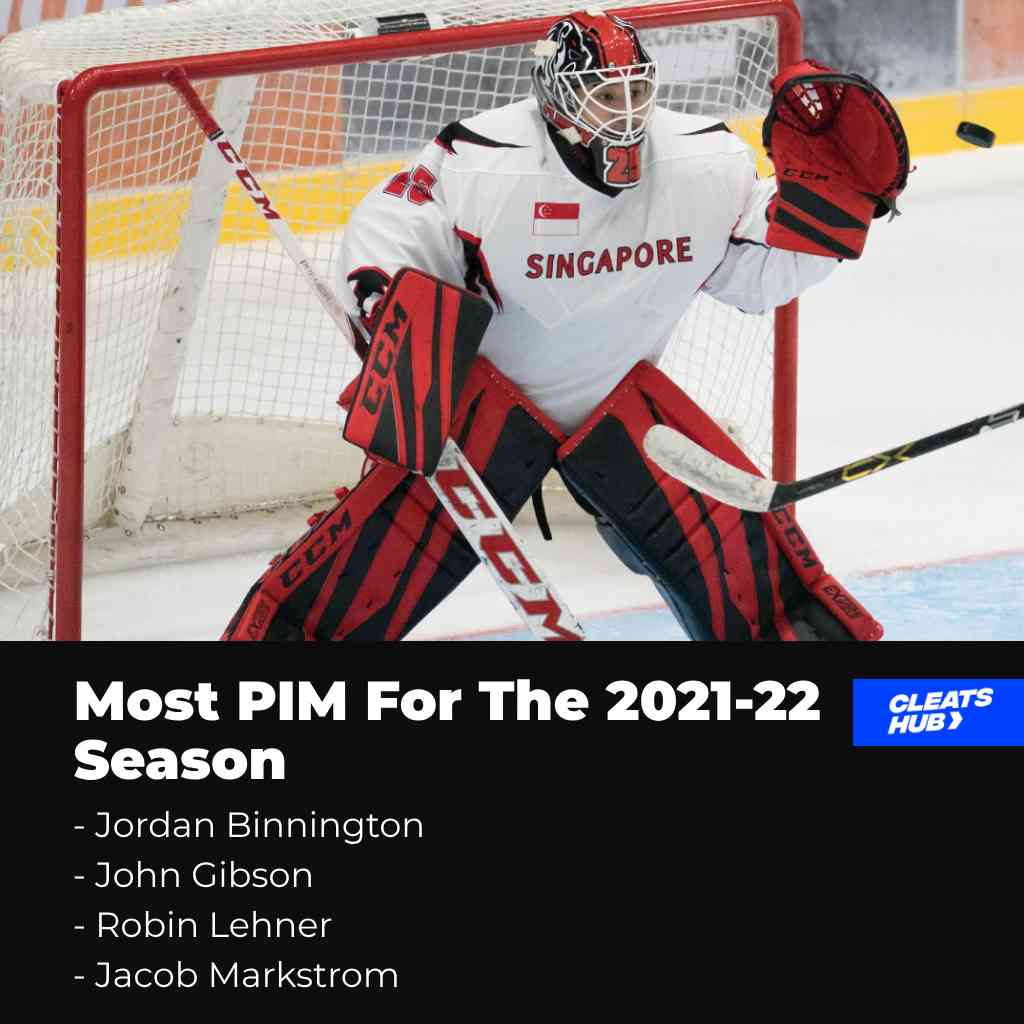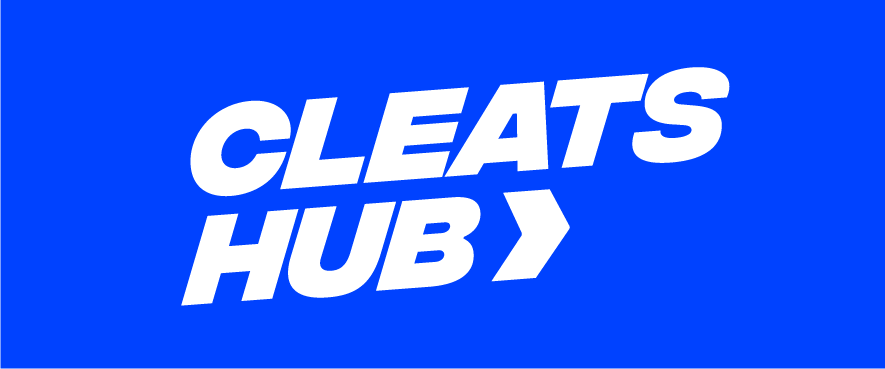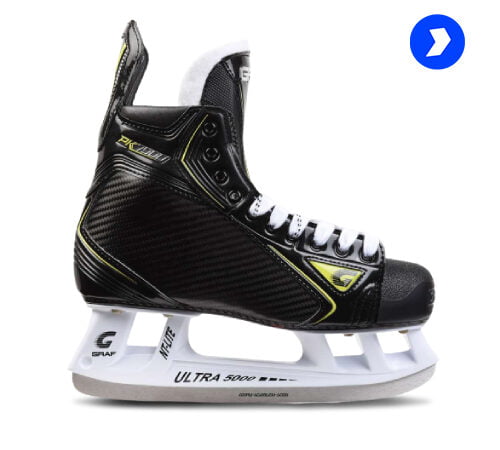What happens When A Goalie In Ice Hockey Gets A Penalty?
An infraction in ice hockey is a situation when a player performs an action that goes against the rules and regulations of the game. In ice hockey, an infraction is punished by a penalty.
In a penalty, a player is sent to spend time in the penalty box. However, the length of the penalty depends on the type of penalty incurred, whether it is a major, minor, or misconduct penalty.
After the penalty has the given, the player who is the offender is sent to the penalty box to serve the penalty time. During this moment, the opposing team has a man advantage over the other team. A man advantage is when a team has more players on the ice than their opposing team.
Yet, there is a caveat to this rule. Even though everyone can get penalized, not everyone does. In ice hockey, there is one particular player that does not serve penalty time: the goalkeeper.
In this article, we will be looking at why the goaltender in ice hockey cannot serve penalty time, along with some exceptions to this rule. Therefore, let’s begin.
Is It Possible For A Goalie To Be Given A Penalty?

As I said earlier, there is not a player on the ice in ice hockey that cannot receive a penalty. This rule equally applies to goalies in ice hockey, meaning that goalies are given penalties in ice hockey.
Some examples of infractions committed by ice hockey goalies include:
- Playing the puck outside the trapezoid:
The trapezoid in ice hockey is the only section of the ice at the back of the goal net where ice hockey goalies are allowed to play the puck at the back of the red goal line. If a goalie plays a puck at the back of the red line outside the trapezoid, he will be given a penalty. - Handling the puck inside the opponent’s side of the ice:
Goaltenders aren’t permitted to play the puck or even tackle opponents within the other team’s side after the red center line in ice hockey. A goalkeeper who does this will incur a minor penalty. - Leaving the ice during an altercation:
Goaltenders are also not permitted to leave the goal for the bench during a pause in play. He must get the referee’s permission if he needs to do this. Also, a goaltender also incurs a penalty if he retreats to the bench following an argument on the ice. - Placing hockey stick on the ice in front of the goal net:
Ice hockey players who play with damaged sticks incur a fine. Goalies are exempt from this rule, as they are permitted to play with damaged sticks. Nonetheless, a goalkeeper can be penalized for an infraction if he leaves the goal crease to grab another stick or places the broken stick on the ice in front of the goal.
What Happens When A Goalie Receives A Penalty?
Let’s now discuss how a goalie’s penalty differs from one that is assessed to a skater on the ice. You are aware that when a skater receives a penalty, whether they are on defense or offense, they have to serve it.
Yet, goalies’ situations differ. Ice hockey goalies are not required to serve the penalties they get. In order to ensure that the goalie is not taken from the net, the club will be forced to give up a player as a replacement.
For example, if a goalkeeper plays the puck outside the trapezoid at the back of the goal net and is given a two-minute minor penalty, the team’s winger may be forced to enter the penalty box in the goalie’s place.
Any player from any position on the rink is eligible to act as the substitute for goaltenders when they commit an infraction. Most of the time, the head coach or one of the other coaches chooses the player to serve the goaltender’s punishment time.
A coach would often pick a player from outside the defensive line to serve the punishment time. This is because the opposition’s side, which is now on the power play, will effectively take advantage of the situation to plan aggressive offensive moves because they are on powerplay.
Reason Why Goalies Are Not Made To Serve Penalty Time In The NHL

Formerly, anytime a goaltender committed an infraction, they were required to spend their penalty time in the penalty box. At this time, a player on the ice would move to the net and do his best to protect it for the remainder of the penalty period.
For the 1942-1943 season, however, the NHL removed this regulation from its rule books and made goalies exempt from serving penalty time. The rationale behind this is that the league recognized that removing the goaltender from the net constituted an additional disadvantage for the club, giving the opposition team an unfair edge in addition to the man advantage.
After the rules were changed, other players on the ice have been serving their goalies’ penalties. Nonetheless, even if a goaltender does not serve penalty time, his penalty minutes (PIM) are recorded against him and not the player serving it for him. In case you didn’t know, PIM is the total time of all penalties assessed to a player.
Exception To A Goalie Not Serving Penalty Time
There are two major exceptions to the concept of goalies not serving penalties in the penalty box. The first one is based on the penalty they commit while the other is based on the ice hockey league they are playing for.
In instances of a misconduct penalty that results in expulsion from the game, the goaltender has to be the one to serve it when he is awarded. Attacking a player or official intentionally with the aim to cause harm is one of the behaviors that might justify a misconduct penalty.
Goalies may be benched and another player may be forced to serve the penalty in some situations if a game misconduct penalty and a minor penalty are both assessed.
Second, various regulations apply depending on the league; examples include the NCAA. In the NCAA, a goaltender who receives a major or misconduct penalty will be sent to the penalty box. In contrast to leagues like the NHL, AHL, and others, this does not offer major or minor penalty exemptions.
Penalized Goalies In The NHL
Goalies in the NHL receive penalties a lot. These penalties are counted as part of their cumulative penalty minutes (PIM). The PIM shows how often a goalie commits infractions in games.
Most PIM By A Goalie In The NHL

Ron Hextall is the NHL goaltender with the most PIM over the course of a career. During the course of his NHL career, Ron Hextall has accrued 569 penalty minutes. The goalkeeper played in 608 NHL games with the Philadelphia Flyers, Québec Nordiques, and New York Islanders combined. Billy Smith follows him, having accrued 475 penalty minutes.
| Ranking | Players | PIM |
| 1 | Ron Hextall | 569 |
| 2 | Billy Smith | 475 |
| 3 | Tom Barrasso | 437 |
| 4 | Ed Belfour | 380 |
| 5 | Sean Burke | 310 |
| 6 | John Vanbiesbrouck | 310 |
| 7 | Mike Vernon | 271 |
| 8 | Don Beaupre | 286 |
| 9 | Patrick Roy | 262 |
| 10 | Dan Bouchard | 255 |
Most Penalty Minutes By Goalies For The 2022-23 Season

Jordan Binnington of the St. Louis Blues holds the record for the most penalty minutes by a goalkeeper in the 2022–23 season. In 61 games during the 22′ regular season, he accrued a total of 19 minutes of penalty time.
| Ranking | Players | Penalty In Minutes (PIM) |
| 1 | Jordan Binnington | 19 |
| 2 | Alex Stalock | 16 |
| 3 | Jacob Markstrom | 14 |
| 4 | John Gibson | 12 |
| 5 | Pheonix Copley | 9 |
| 6 | Thatcher Demko | 4 |
| 7 | Darcy Kuemper | 4 |
Most Penalty Minutes By A Goalie For The 2021-22 Season

In the 2021–22 season, Jordan Binnington was once again the goalkeeper with the most PIM in the league. Binnington accrued a total PIM of 14 minutes throughout 37 games. Compared to John Gibson, who played in 56 games and accrued a PIM of 12 minutes, this is greater.
| Ranking | Players | Penalty In Minutes (PIM) |
| 1 | Jordan Binnington | 14 |
| 2 | John Gibson | 12 |
| 3 | Robin Lehner | 10 |
| 4 | Jacob Markstrom | 10 |
| 5 | Elvis Merzlikins | 8 |
| 6 | Jonathan Quick | 6 |
| 7 | Mike Smith | 6 |
| 8 | Andrei Vasilevskiy | 6 |
| 9 | Jeremy Swayman | 6 |
| 10 | Sergei Bobrovsky | 4 |
Conclusion
Goalies are considered to be one of the most protected sets of players on the ice. They serve the role of protecting the net and the vital role of keeping the hope of the team alive. With this, it is only natural that they are given a certain level of freedom and privileges.
But one thing to note is that ice hockey goalies do not usually make as many infractions that call for a penalty as skaters. This is because they do not often come in contact with players from the opposing team that often. Therefore there are fewer chances of an altercation between them and the opposing team’s players.
Thanks for reading.
Psstt…. The Top Performing Cleats
Psstt…. The Top Performing Cleats










